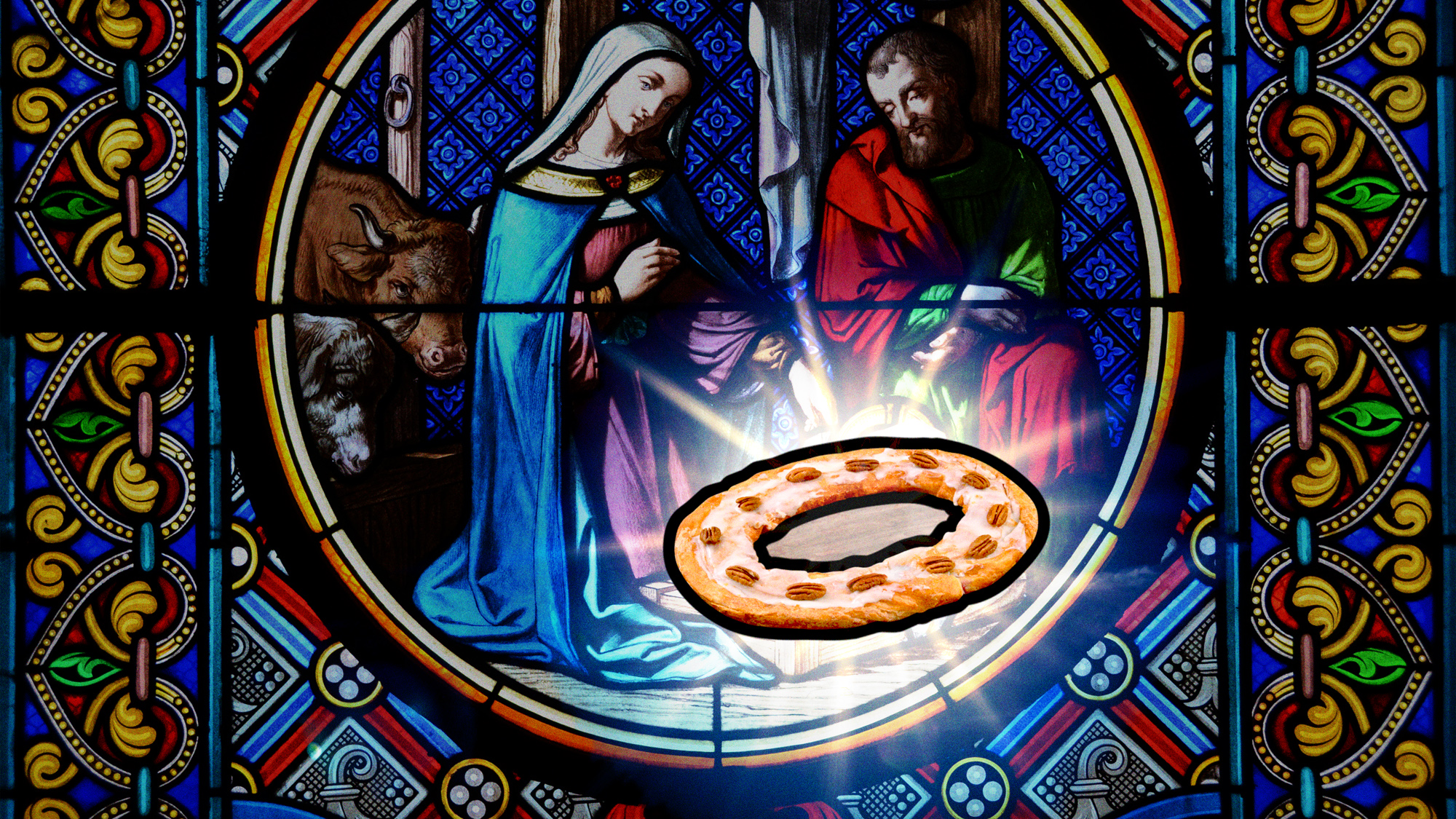For Unto Us, A Kringle Is Born: In Praise Of The One True Holiday Pastry
This Scandinavian holiday pastry is nothing short of extreme.
I have consumed a great many holiday baked goods in my time—some of them very good, but far more of them bad. I have slogged through loaves of bone-dry panettone, plunged elbow-deep into lackluster caramel popcorn tubs, and conducted exactly one informal scientific inquiry titled "Yule Logs: Why?"
Please know that I am not snobbish about baked goods. I have the sweet tooth of an 8-year-old. But there's something about the holidays that brings out the absolute worst in baked goods. I think it's because, in a lot of ways, traditional holiday pies set the baker up to fail. Volunteer to bring a pie to the holiday function, and if you have no previous pie-baking experience, you have two choices: grope your way through a vague family recipe scrawled in your great-grandmother's illegible handwriting, or bring a store-bought cavity bomb.
But while the holidays can bring out the worst in baked goods, they can also bring out the very, very best. And it is truly by the grace of the slick, mucus-covered infant Christ that I was born into the cult of the One True Holiday Pastry: the kringle, a Scandinavian holiday pastry that is nothing short of extreme. Think of a kringle as a giant, oval-shaped danish with 36 individually buttered layers (thirty! six! layers!) of pastry dough, stuffed with fillings like fruit preserves or caramel. In my very Midwestern family, nothing surpasses kringle. For me, kringle tastes like home—but, perhaps more importantly, it represents a welcome reprieve from December's parade of fruitcakes and cheese platters.
Much like the infant Christ, the kringle was born to bring peace on earth and goodwill toward men. Unlike the infant Christ, however, the kringle did not emerge in a barn, but in the kitchens of Viennese and Danish pastry chefs. Danish immigrants brought it to North America in the late 1880s when a large Danish population immigrated to Racine, Wisconsin. Today, the flaky, buttery pastry is the official state pastry of Wisconsin, and Racine remains the de facto kringle capital of North America. But the very best kringle bakery in North America is actually a few hours away in De Pere, Wisconsin. There, Mike Vande Walle operates Uncle Mike's Bake Shoppe, an old-school Midwestern bakery that won the coveted North American Kringle Competition Grand Champion title in 2014. (The award has not been awarded since.)
I discovered Uncle Mike's after I moved to Chicago and created a "best of" spreadsheet that outlines the most critically acclaimed foods and beverages within three hours of the city. I was originally drawn in by the siren song of the award-winning sea salt caramel pecan kringle, but the kringle's old-school pretzel shape and stunning girth really sealed the deal for me: Uncle Mike's really is the best. It's important to note that the North American kringle crown is heavy indeed—Uncle Mike's churns out up to 3,000 kringles a day during the month of December—but Vande Walle doesn't let it go to his head. He's a benevolent ruler, a lifelong Wisconsonite, and precisely the kind of person you trust to produce an exceptional two-pound pastry.
There are now three Uncle Mike's Bake Shoppe locations in Wisconsin with one central production facility that operates nearly 24 hours a day throughout December in order to ship out thousands of kringles. At that level of production, one might assume that Uncle Mike's would produce a dud or two. But Vande Walle says this is not so. "It's a little more work that way," he says. "But to make the absolute best product and put a smile on a customer's face—that really makes it worthwhile."
Vande Walle's award-winning recipe is the result of years of trial and error to master centuries-old Danish baking techniques. It's also the result of layers of European-style butter from Pine River Dairy in Manitowoc, Wisconsin. At Uncle Mike's, it takes about three days to make a single kringle. The process goes roughly as follows: bakers load 15-pound pieces of dough with five pounds of butter. The dough is rested, then placed in an electric sheeter, then divided into about 16 individual three-foot-long kringles. The kringles are then shaped by hand into their signature pretzel shape, filled with about a pound of filling each, baked, and iced. A finished kringle should weigh between 32 and 33 ounces.
And he shall bring forth a Kringle, and thou shalt call his name the Kringle King: for he shall save his people from their sins and also from Sam's Club cherry pie.
For me, a good kringle showcases the best things about the Midwest. It's loaded with carbs and a little messy. It's also best enjoyed warmed in the oven at 350 degrees Fahrenheit, topped with vanilla bean ice cream, and devoured while watching trash TV on the couch alongside one's sister. In the true spirit of the Midwest, kringle is also available whenever you need it. Bakeries like Uncle Mike's ship nationwide, and almond kringle flies off the shelves at Trader Joe's during the holiday season. (Note: the Almond Kringle isn't a Trader Joe's product; it's made by O&H Danish Bakery in Racine.) Most importantly, the kringle represents the tender excess of my own Missouri roots. While the rest of the world prioritizes sleekness, minimalism, and innovation, I'll be holed up at my parents' house, clad in pajama pants with a hole in the crotch and wolfing down another slice of raspberry kringle. Go tell that on the mountain.
